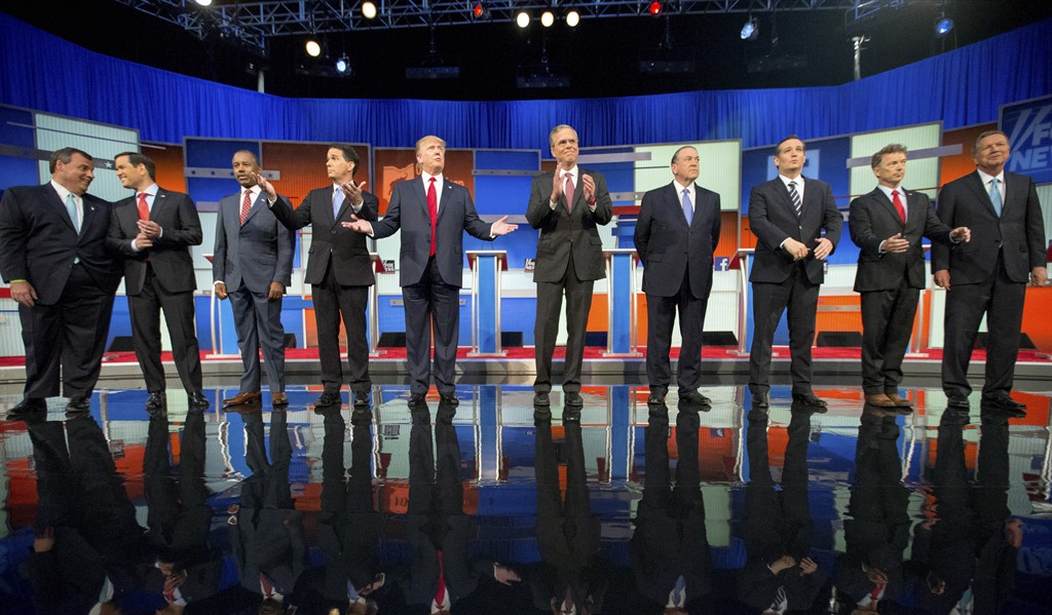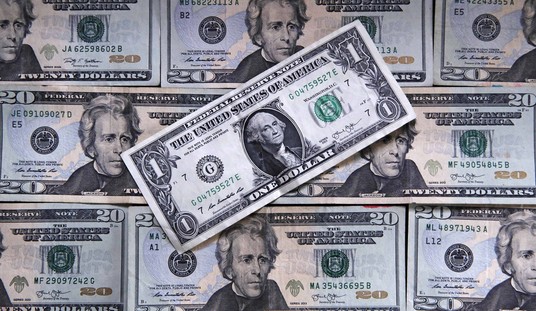One of the political dynamics I get asked about frequently is whether the presidential sweepstakes in 2023 and 2024 will mirror what happened in 2015 and 2016. Two cycles ago, Donald Trump took the GOP nominating process by storm, garnering intense interest and passionate support, albeit not from a majority of Republican voters. Indeed, at the end of the process, Trump only attracted around 45 percent of the combined primary vote -- but that was more than enough to defeat a splintered field. Seventeen 'major' candidates sought the oval office on the Republican side, resulted in a very crowded pack, even requiring multiple debate stages in the early going. Various figures clung to delusional theories of the race as the weeks and months churned forward, vying to command certain "lanes" and attacking each other, mistakenly assuming Trump would eventually implode. By the time reality disabused them of such fantasies, it was too late. The rest is history.
With a new cycle underway, a familiar scenario is rearing its head: Donald Trump enjoys plurality national support among Republican voters, even as majorities of right-aligned tell pollsters they'd prefer to see someone else as the nominee. Once again, it stands to reason that the more Republicans who jump into the race, the more Trump is likely to benefit. His grip on 30-40 percent of the primary electorate could well be sufficient to pull off a 2016 repeat. I've seen a few analyses arguing that 2024 ultimately won't resemble what happened eight years prior because there have been lessons learned. No one will underestimate Trump this round, for instance. And candidates may strategically drop out sooner if they're not on a truly realistic track to actually win. That's all plausible. But I still believe that the bigger the field, the better it is for Trump. That's why, at least on paper, he should welcome each entrant with enthusiasm. Even a few months ago, there were close to two dozen names being tossed around as potential presidential candidates.
But over recent weeks, there has been an early winnowing, with a slew of rumored contenders taking themselves out of the mix. Several United States Senators are taking a pass -- including Tom Cotton, Josh Hawley, Rand Paul, and Ted Cruz. Rick Scott is also out, training his focus on re-election in Florida, while buzz around Marco Rubio and Joni Ernst seems to have subsided. It's entirely possible that zero Senators take the plunge this time, although Tim Scott of South Carolina is actively testing the waters. Over the weekend, former Maryland Governor Larry Hogan announced that he will not be launching a presidential campaign after all, specifically citing the aforementioned 'crowded field' calculus as a key reason why he's declining to run:
Recommended
BREAKING NEWS: Former MD @GovLarryHogan tells @costareports, in a @FaceTheNation with @margbrennan exclusive, that he will not seek the GOP presidential nomination in 2024. “I didn’t want to have a pileup of a bunch of people fighting,” he says. More at 10:30am ET. Tune in. pic.twitter.com/1voXeWfwTW
— Face The Nation (@FaceTheNation) March 5, 2023
So far, only Donald Trump, Nikki Haley and businessman Vivek Ramaswamy are in. Mike Pence is very likely to run, too. Mike Pompeo very much appears to be moving in that direction, but still hasn't pulled the trigger (one GOP insider told me he's seen as being in a 'holding pattern' right now). Ron DeSantis is waiting in the wings, of course, increasingly expected to join the fray later this spring, after Florida's legislative session ends. So who else remains in the discussion? Chris Christie has signaled an interest in serving as an aggressive anti-Trump foil should be enter the fray, and former governors Chris Sununu and Asa Hutchinson continue to hint that they may dive in. I've heard Glenn Youngkin is leaning away from running in 2024 (much of of the presidential scuttlebutt is still speculative), and there hasn't been meaningful public movement toward bids from governors like Greg Abbott, Kristi Noem or Brian Kemp. A few other names like former electeds and ex-officials like Liz Cheney, Will Hurd, and John Bolton crop up occasionally, but these probably aren't people who would break into relevant or top-tier status, even if they did get involved. Things may shift, and some surprises may still arise -- but as of right now, the over/under number on total candidates is shaping up to be closer to ten than 15. Taking the under may not be an indefensible bet at this point. A lot of other factors will come into play, and by no means would a lower number of entrants automatically signal trouble for Trump, but at least in one meaningful way, 2023 is looking a little less like 2015 than was initially apparent. This polling analysis is interesting:
While former President Donald Trump continues to lead national polls for the 2024 GOP primaries, state polling is more of a determining factor, and Florida Gov. Ron DeSantis is topping several important states. In states with the most recent primary polling, DeSantis leads in five– Alabama, California, Michigan, Pennsylvania and North Carolina. There are several other states in which he leads, but with several caveats. In Kansas, Maryland and Missouri, DeSantis beats Trump in a head-to-head matchup, however, in a field of other current and potential candidates, the former president leads...Contenders definitely would rather be leading in state polls than national polls, especially in early primary state polls, Kyle Kondik, managing editor for Sabato’s Crystal Ball, a nonpartisan political analysis newsletter, told the DCNF. In Alabama, DeSantis is ahead by nearly 20 percentage points in a head-to-head matchup with Trump. In California, the governor leads the former president 37% to 29% in a field of 11 potential GOP candidates. DeSantis beats Trump in a head-to-head matchup in Michigan, 47% to 42%. In Pennsylvania, DeSantis leads Trump 37% to 32% in a field of contenders. In North Carolina, the governor wins against Trump, with a 12.7 percentage point lead...Trump leads the governor in Arizona, Mississippi, South Carolina and Virginia, in recent polling.
"It is difficult to decipher how he will fare in the primaries before he officially enters the race," the story says, quoting Kondik, in a piece of major understatement. DeSantis is a hypothetical force in the contest at the moment, and there's often a big difference between a possible candidacy and an actual one. That said, there's clearly a reason why Trump has trained so much preemptive fire at DeSantis, test-driving an array of pejorative nicknames -- including, uh, 'Tiny D.' Buckle up. I'll leave you with this 2024 nugget from the other side of the aisle:
Senator Joe Manchin does not rule out a 2024 presidential bid in new interview with @margbrennan @FaceTheNation, doesn’t offer support to expected Biden reelect, and says he’s waiting to see how the race develops: “let’s see who all the players are” https://t.co/oThpFCaU4P
— Robert Costa (@costareports) March 5, 2023

























Join the conversation as a VIP Member